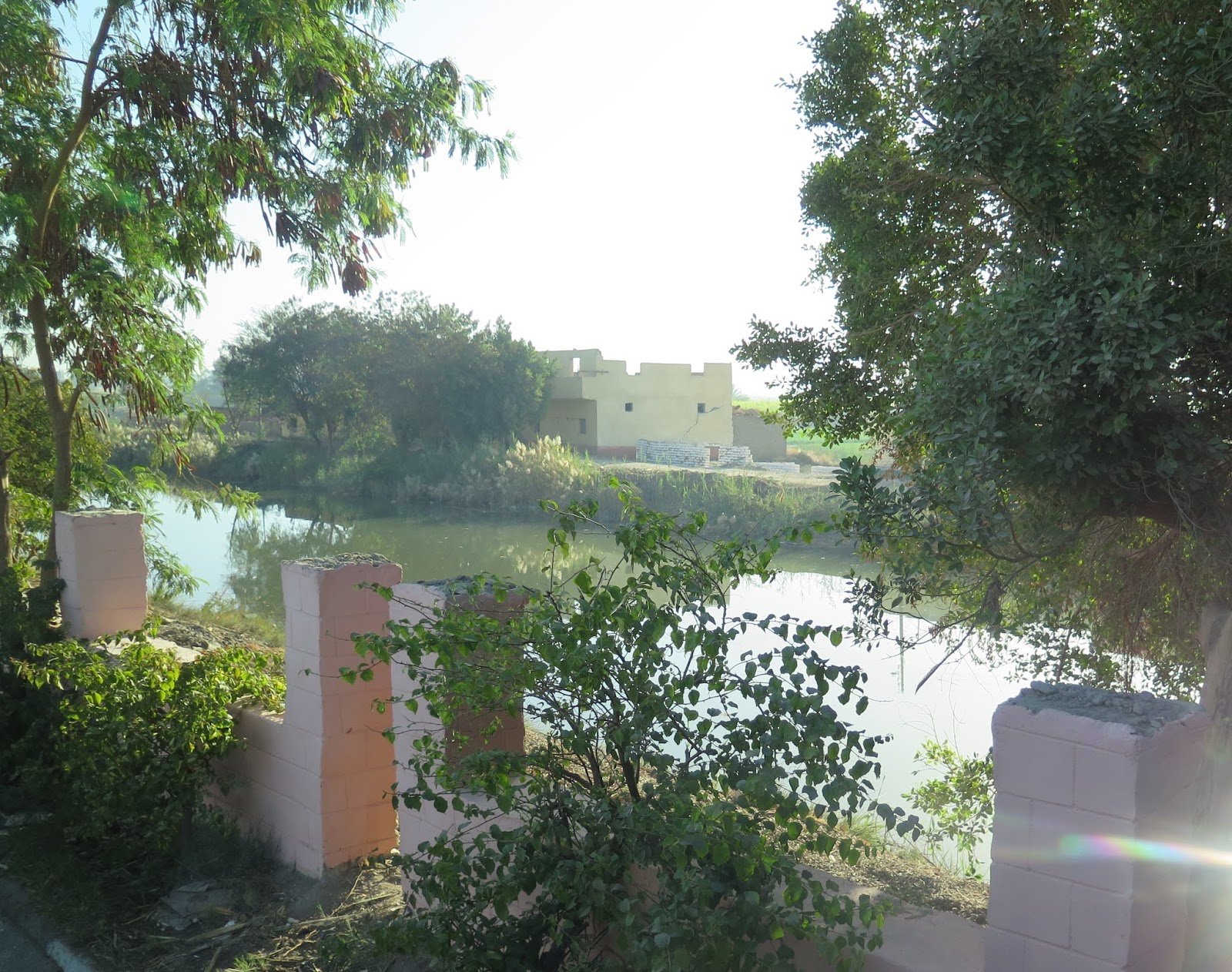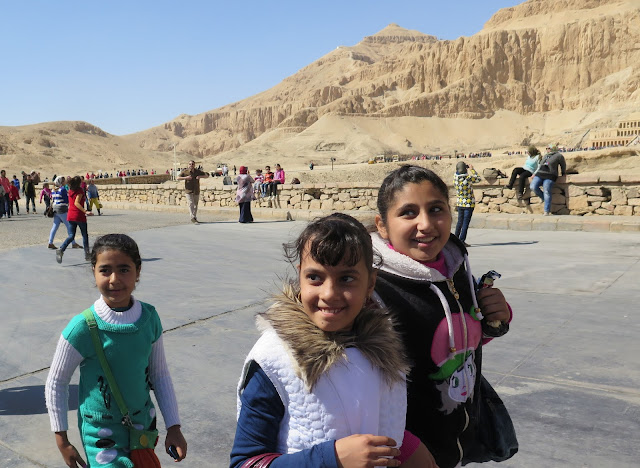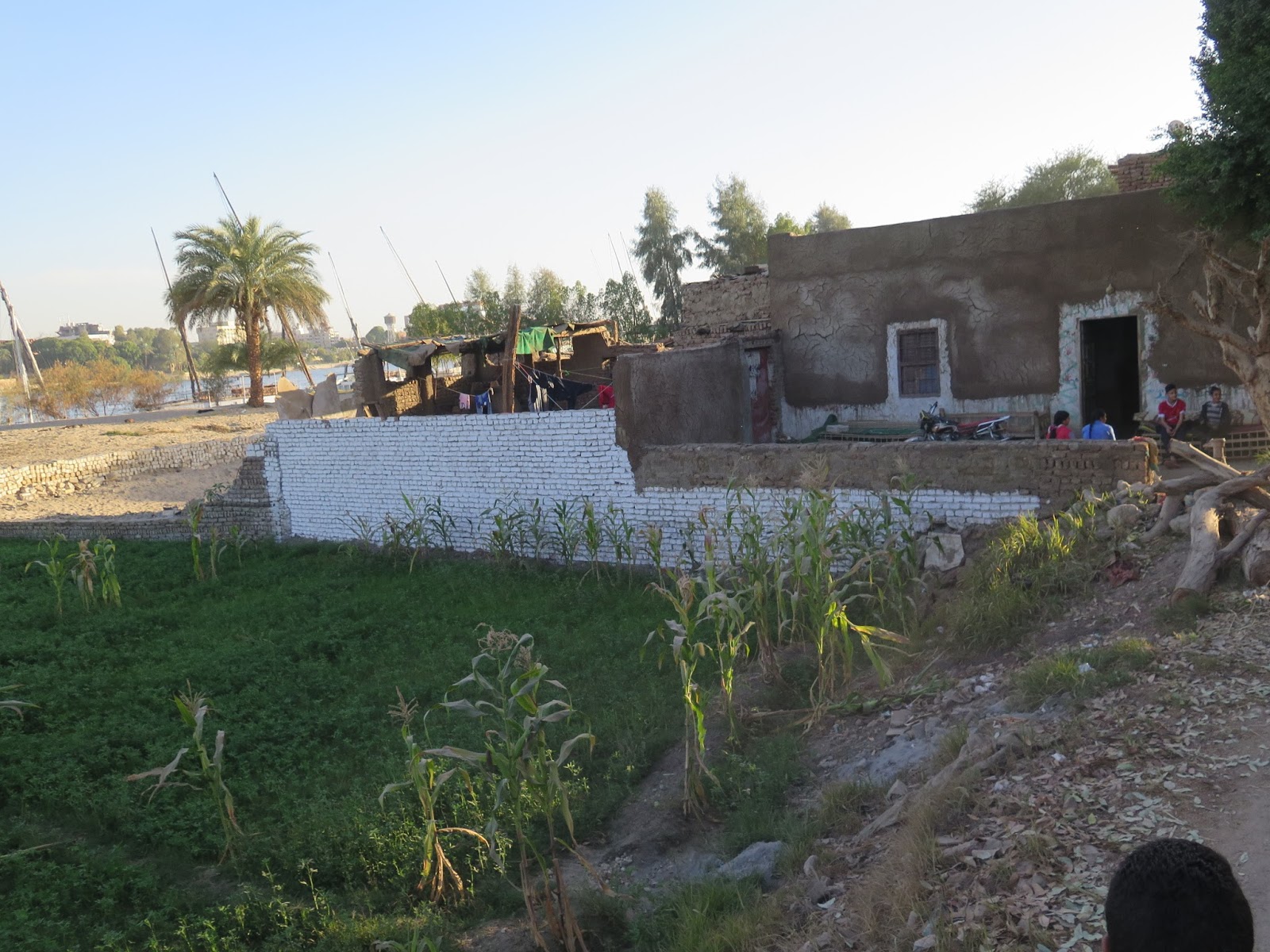After touring the Valley of the Kings, we went to see the Temple of Queen (Pharaoh) Hatshepsut. The time period is the 8th Dynasty (1490-1460 BC). It is located on the western bank of the Nile River and is considered one of the most beautiful royal mortuary temples in the world.
On our way to the Temple of Hatshepsut, we saw fertile farm lands and interesting sights along the way. The people are poor and struggle to survive and use every resource they have to live from day to day.




Sugar cane fields.
The temple in the distance was built by Queen Hatshepsut, stepmother and aunt of pharaoh Thutmose III. The building of this temple started during the 7th year of her reign. She was the first known female pharaoh and ruled for about 20 years.
Egypt is a country mainly of Muslims so tourists need to be respectful in their dress when visiting places like this. We were told to dress modestly with long pants and blouses with collars. To dress otherwise, we would feel very out of place!
The story of Pharaoh Hatshepsut has an interesting twist. She was the only child born to the King Thutmose I and his principal royal wife. While most Ancient Egyptians were monogamous, the pharaoh would have had other lesser wives and concubines. This arrangement would allow the pharaoh to enter into diplomatic marriages with the daughters of allies, as was the custom of ancient kings or pharaohs.
After the death of her father, Hatshepsut married her half-brother, Thutmose II, who ruled for 15 years. Thutmose II died after a 15 year reign, making Hatshepsut a widow before the age of 30. However, the throne fell to Thutmose III, her step-son and nephew. Because Thutmose III was a child and unable to rule after the death of his father, Hatshepsut stepped in and served for three years until she proclaimed herself Pharaoh. She ruled for about two decades, thus delaying the ruling of Thutmose III.
Surviving portraits show her dressed in a kilt with royal crown and sometimes with a false beard. This was her way of asserting her authority. She eventually dropped the "t" which was the female ending from her name and she became known as "His Majesty, Hatashepsu."
The temple was built on three levels with two wide ramps in a central position joining the levels together. Two statues of crouching lions flank the entrance to the ramp. Behind the wide terrace is a colonnade with two rows of square columns on each side of the ramp leading to the third level.


During Hatshepsut's reign, there were gardens and terraces of frankincense trees and rare plants brought from Punt, a place that is painted in reliefs that decorate the walls of one of the colonnades.
This is a copy of a relief recording Queen Hatshepsut's expedition to Punt. It was supposedly one of the first oceanographic expeditions recorded in art history. This type of river craft was designed to transport heavy construction material such as huge stones and obelisks. (Remember those from the Luxor Temple?) It was crafted from reeds and reinforced by a webbing of substantial girdling trusses.

It was hard to believe that this temple was constructed thousands of years ago because it resembles classical Greek architecture which didn't appear until 1,000 years later! It took 15 years to construct and was precisely placed on the axis of the Temple of Karnak but also about 1,000 feet in a straight line from the tomb she had ordered to be constructed for herself in the Valley of the Kings. However, her tomb was placed on the other side of the mountain.

During Hatshepsut's reign, there were gardens and terraces of frankincense trees and rare plants brought from Punt, a place that is painted in reliefs that decorate the walls of one of the colonnades.
Queen Hatshepsut statue - Cairo Museum
There were many reliefs in this temple and some are supposedly of Hatshepsut's birth and her visit to Punt. Punt was an area rich in resources located in either Southeastern Egypt or even what is now known as Ethiopia. Nevertheless, it was known as "the Land of the Gods."
Texts engraved on the walls describe the voyage, the gifts offered to the king and queen of Punt, the products exported from there, including cinnamon, trees, ebony, ivory, gold, aromatic wood, incense and myrrh, and various animals.
This relief details marine life. The zigzag areas represent water.
This relief shows that the inhabitants' dwellings were reached by ladders.
Painted star ceiling in the Temple of Hatshepsut.
Under Queen Hatshepsut's reign, Egypt prospered. She focused her efforts on building prosperity in the land and restoring monuments throughout Kemet and Nubia rather than conquering new lands.
Researchers found Queen Hatshepsut's mummy in tomb KV60A in the Valley of the Kings. Her mummy indicated signs of arthritis, dental cavities and root inflammation, diabetes and bone cancer. She was 5 feet tall and was characterized in reliefs as an obese woman.

This relief shows Thutmose III in battle as a mighty warrior. He was called a military genius and made 16 raids in 20 years, captured 350 cities and has been called
the "Napoleon of Egypt".
 |
| Thutmose III Statue |
Hatshepsut's successor, Thutmose III, became the greatest of all Pharaohs but after her death, he ordered her name, images and inscriptions to be defaced from the walls and then built his own temple directly to the west of hers across the Nile River. He must have been a disgruntled pharaoh or perhaps he thought of her as his "wicked step-mother?"
Now for something Garth and I had been looking forward to . . . riding on camels. It fun and surprisingly not uncomfortable. Our 30 minute ride took us through some poor neighborhoods and it was interesting to get a better look of how the people live. The young boys were flirting with the pretty JC girls and seemed to really enjoy what they were doing.
"Hang on Myrtle, this ain't no turtle!"
This was an interesting tree or plant.
Jake was having a blast!
"Giddyup," yelled Jordan.
I love camels and finally can cross riding a camel off my bucket list!
The boys who lead the camels enjoyed practicing their English with Madeline, a JC student.

The End!
To be continued . . .













































Great job! You've passed me up on that one. Our only chance to ride a camel was at Petra and we decided to bag the chance and see more of Petra. You continue to look younger and younger in every post. I think this trip did wonders for you. Did you get more rest or just have a great time being diverted from all the stress at the JC?
ReplyDeleteLove...
ReplyDeleteLoved your pictures! What a wonderful adventure!!! You both look better than Indiana Jones!!!!!!!!!
ReplyDelete